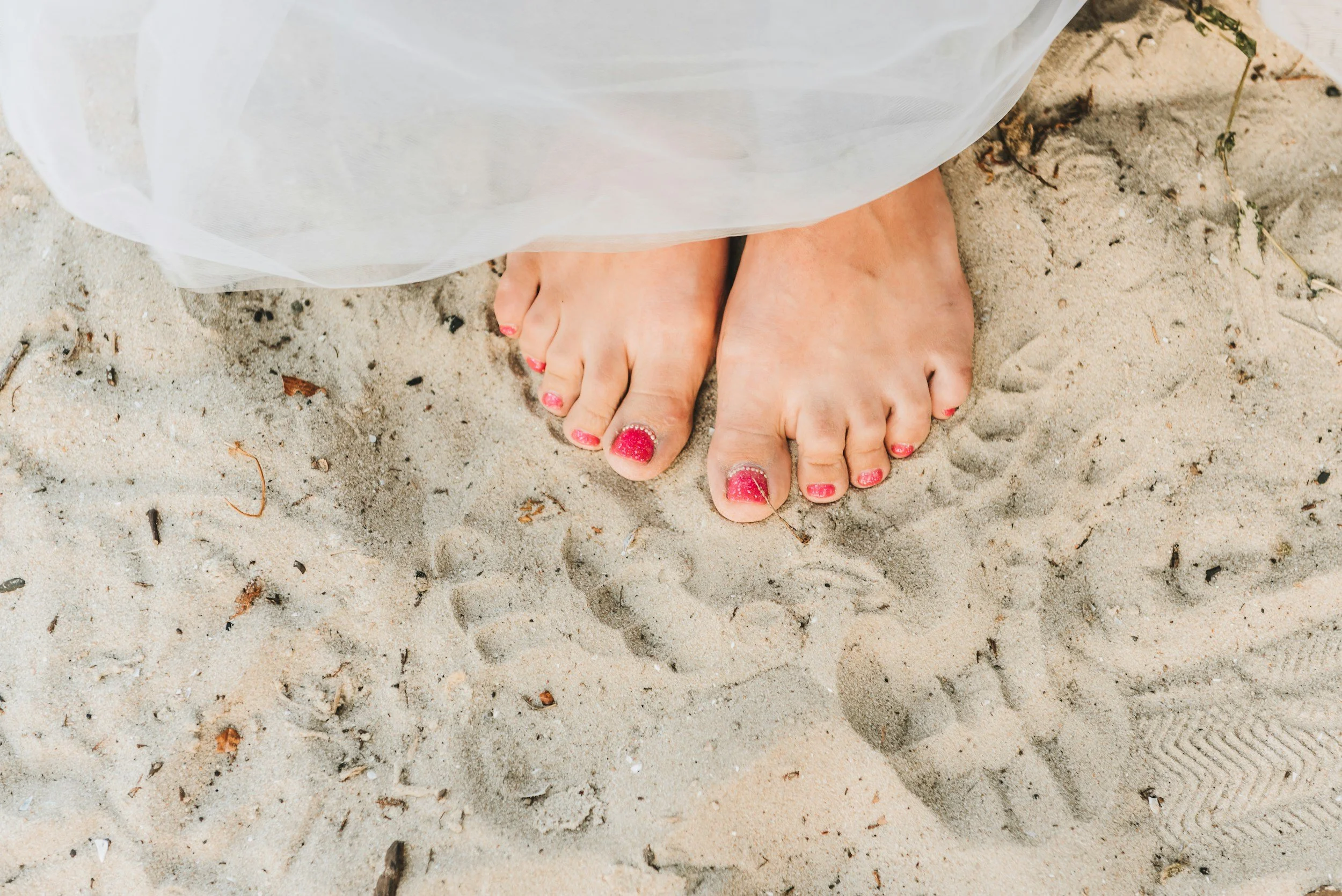Clawed Toes, Hammer Toes, Mallet toes, and When to Fix Them
If your toes are starting to curl, rub in your shoes, or make walking uncomfortable, you might be dealing with a condition called clawed toes or hammer toes. These are common problems, especially as we get older or if we’ve had years of pressure on our feet from tight shoes, bunions, or changes in foot shape. The good news? In the right patient, these can often be treated with a minimally invasive procedure — no stitches required — and you’ll be walking straight after surgery.
What Are Clawed, Hammer, and Mallet Toes?
Although the terms are often used interchangeably, they refer to slightly different deformities:
Hammer toe usually affects the second toe and bends at the middle joint, making the toe look like a hammer.
Clawed toe bends both at the middle and end joints, often pulling the toe down toward the sole.
Mallet toe affects just the tip of the toe, bending at the joint closest to the nail.
These conditions can affect one toe or multiple toes and often occur alongside bunions or flat feet.
Common Symptoms
Pain or pressure on the top of the toe from shoes
Corns or calluses
Redness or swelling at the joints
Difficulty fitting into shoes
A feeling of “clenching” under the ball of the foot
Sometimes, open wounds if pressure is severe (especially in diabetics)
Why Do These Toe Deformities Happen?
The causes are often a mix of:
Muscle imbalance between the top and bottom of the foot
Poorly fitting shoes (tight or high-heeled)
Bunions shifting the pressure to the lesser toes
Long-standing arthritis or inflammatory conditions
Neurological conditions affecting the foot muscles
When Should You Consider Surgery?
Not every curled toe needs an operation. I would usually start with:
Shoe modifications (a wider toe box, softer upper materials)
Padding or toe sleeves
Custom orthotics
Physiotherapy or toe exercises
But when pain persists, toes become fixed, or corns keep recurring, it may be time to consider surgery — especially if the deformity is affecting your ability to walk or wear shoes comfortably.
Minimally Invasive Surgery – A Modern Option
In the right patient, clawed, hammer, or mallet toe correction can now be done through a minimally invasive approach. This means:
No stitches – just tiny incisions (a few millimetres wide)
Immediate walking – you can walk straight after surgery in a special shoe
Quick recovery – most patients wear the postop shoe for 4 weeks, then return to normal footwear
Minimal scarring – barely visible once healed
This technique reshapes the bones and soft tissues through tiny cuts, done under X-ray guidance. It can be combined with other procedures (such as bunion surgery) if needed.
Who Is a Good Candidate?
You're likely a good candidate if:
You have persistent toe pain or shoe pressure
The toe is stiff or fixed in position
You’ve tried non-surgical options without relief
You’re otherwise in good health with reasonable circulation to the feet
Final Thoughts
Curled toes may seem like a small problem, but they can make everyday life uncomfortable — especially if they stop you from walking or exercising freely. If they’re starting to affect your quality of life, it’s worth having a chat with an orthopaedic surgeon who specialises in foot and ankle surgery. In the right hands, the solution can be simple, effective, and minimally invasive.

